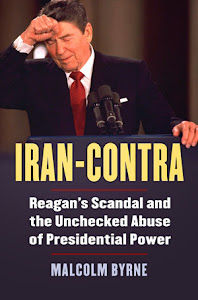High technology enables the United States and other countries to kill specific terrorists with limited collateral damage. Yet, as Nicholas Rostow reminds us, just because targeted killings may be arguably legal and even ‘prudential’, that doesn’t mean they avoid certain costs.

The struggle against terrorism—more specifically, the effort to prevent terrorist attacks—has raised difficult legal and policy issues including so-called targeted killing, or the killing of specific individuals because of their involvement in terrorist organizations and operations. As we shall see, this form of targeted killing involves domestic and international legal authorities and policy and prudential issues. A substantial number of countries confronting what they consider to be terrorist attacks and threats engage in targeted killings. Each has to resolve questions about authorities and prudence because, while terrorists are always criminals, they also may be lawful military targets. The dual character of terrorists leads to the conclusion that, as a matter of policy, a state should weigh the totality of the circumstances and conclude that no other action is reasonable to prevent a terrorist attack before engaging in the targeted killing. Careful analysis in advance may preempt problems later.
This essay addresses the question principally from the American perspective. It examines the authority, as a matter of U.S. law, for the United States to kill individual terrorists and the international legal context for such operations. The operating premise is that the targeted killing of al Qaeda leaders is emblematic of the subject under review in contrast to such domestic police action against terrorists as the arrest, prosecution, conviction, and execution of Timothy McVeigh, who was principally responsible for the bombing of the Federal office building in Oklahoma City in April 1995.1 The essay concludes that authority in domestic and international law exists for such operations and that, as a policy choice, the United States would do well to apply the Geneva Conventions of 1949 in the conflict with terrorists whether or not it is legally required. In any event, policymakers need to weigh the consequences of targeted killing operations because, like all military operations, unforeseen results—positive and negative—are likely.
Authorities for Targeted Killing
As spokesmen for the U.S. Government have emphasized,2 America’s use of force against terrorists takes place in the context of “armed conflict.” For practical and legal reasons they distinguish the conflict with al Qaeda and similar organizations from counterterrorism law enforcement at home or in other countries, which principally involves the police. This delimitation is commonsensical. It is also important. One does not want the U.S. Government engaging in military operations on American soil absent extraordinary circumstances. Authority for using the military instrument abroad against terrorists in the context of “armed conflict” comes from the Constitution and statute, and the use of armed force needs to comply with the international law of armed conflict (also known as the laws of war or international humanitarian law).
More than 200 years of practice have confirmed that the President has the responsibility to direct the Armed Forces to defend the country. The President accordingly had constitutional authority to order counterattacks by U.S. forces against terrorists who had engaged in attacks against the United States and its citizens even before September 11, 2001.
Presidents George W. Bush and Barack Obama have not had to rely on their constitutional authority alone. After September 11, 2001, Congress gave the President broad authority
to use all necessary and appropriate force against those nations, organizations, or persons he determines planned, authorized, committed, or aided the terrorist attacks that occurred on September 11, 2001, or harbored such organizations or persons, in order to prevent any future acts of international terrorism against the United States by such nations, organizations, or persons.3
This statute provided explicit authority for U.S. military operations in Afghanistan and against those the President determined were involved in the September 11 attacks. The words “necessary and appropriate” limit the use of the military instrument to those situations where police action, by the United States or the state in which the terrorist is found, is impossible. Had the perpetrators resembled Timothy McVeigh and been subject to arrest inside the United States, the use of the Armed Forces would have been neither necessary nor appropriate. One therefore should not expect remotely piloted aircraft attacks in London. In states unable or unwilling to take action to prevent their territories from being used by terrorists, the legal and practical situation is different. A use of force, as against Osama bin Laden, may be lawful as well as the only practicable course, especially when a host government withholds its cooperation. On balance, it became more important to the United States and to the international multilateral effort to suppress terrorism to capture or kill bin Laden than to be sensitive to a breach of Pakistan’s territorial integrity and amour propre.
The conduct of military operations pursuant to these constitutional and statutory authorities has to conform to U.S. legal obligations regarding armed conflict. In the main, the rules for American use of force are contained in the Geneva Conventions of 1949 and subsequent treaties to which the Nation is a party or, as in the case of some articles of the 1977 Protocols Additional to the 1949 Geneva Conventions, which Washington regards as accurate statements of the customary international law of armed conflict. In 2010 the State Department Legal Adviser stated that the United States applied “law of war principles,” including:
First, the principle of distinction, which requires that attacks be limited to military objectives and that civilians or civilian objects shall not be the subject of the attack; and
Second, the principle of proportionality, which prohibits attacks that may be expected to cause incidental loss of civilian life, injury to civilians, damage to civilian objects, or a combination thereof, that would be excessive in relation to the concrete and direct military advantage anticipated.4
In other words, if the target is lawful under the laws of armed conflict, a state may use weapons, including weapons delivered by remotely piloted, unmanned aerial vehicles, against such targets. In this sense, targeted killing is high technology sniping.
This analysis rests on the premise that the United States is in an armed conflict with al Qaeda as a result of the attacks of September 11, 2001, a conclusion that itself reflects a process of analysis. Under longstanding principles of international law, a state bears responsibility for uses of force from its territory about which it knew or should have known. That responsibility includes a duty to prevent and, if prevention proves impossible, suppress. When a state is unable or unwilling to discharge such international legal obligations, the victim state presumptively has rights of self-defense. Thus, when Afghanistan was the base from which the 9/11 attacks were conducted and when Afghanistan was unwilling or unable to take action against the perpetrators, the United States enjoyed the right to use force in self-defense to attack those actors in Afghanistan. This legal analysis provides the basis for the U.S. use of force in Afghanistan commencing in 2001.
Laws of War and Targeted Killing
Confusion has bedeviled discussion of the conflict between the United States and al Qaeda. Assuming that al Qaeda is a true nonstate actor, governments have had to decide whether the United States is in international armed conflict with al Qaeda and, if so, what rules apply. These questions are rooted in the language of the four Geneva Conventions of 1949.
By their terms, the Conventions apply to conflicts among the “High Contracting Parties” or to “armed conflict[s] not of an international character occurring in the territory of one of the High Contracting Parties.”5 This language means, respectively, conflicts between or among states and civil wars.6 Based on that language, the U.S. Supreme Court determined that the conflict with al Qaeda was a global, noninternational armed conflict to which Common Article 3 of the Geneva Conventions of 1949 applied because that seemed to be the only part of the Conventions that could apply to nonstate actors.7 While the effort to avoid placing alleged terrorists in a legal no-man’s land is laudable, the Supreme Court’s effort in this regard involved intellectual incoherence. As it must, the executive branch adheres to the Supreme Court decision. At the same time, without violating that decision, the U.S. Government may follow an intellectually coherent and simpler approach than the Supreme Court’s by following the Geneva Convention lead.8
The Geneva Convention Approach
The Geneva Conventions, binding as they are on all states, provide a useful guide to governments. They do so whether one uses military or law enforcement instruments against terrorists. If a government treats terrorists outside its jurisdiction or the jurisdiction of a state capable of using the criminal law against terrorists as subject to the Geneva Conventions, then its course is clear. If it captures a terrorist fighter, that fighter may be prosecuted for violations of the Geneva Conventions and then returned to prisoner of war status once a sentence, if any, is served. Prisoner of war status ends with the end of the conflict. Today it is difficult to foresee an end to the U.S. conflict with al Qaeda notwithstanding the deaths of so many al Qaeda leaders and followers.
Treating terrorists as if they are not combatants and are not entitled to prisoner of war status may be legally correct; it nonetheless puts a government in a policy and legal straitjacket. Terrorists inevitably fail the requirements set forth in the third Geneva Convention to wear a uniform, carry weapons openly, obey the laws of war, and operate in an organized fashion under a commander responsible for his or her subordinates, with rigorous systems of command and control, in order to enjoy the privileged status of combatant and prisoner of war upon capture.9 The terrorists’ failure in these respects does not make it easier to deal with detainees, as the American experience during the past 11 years demonstrates. As a result, a new approach is needed. That approach should be rooted in the law and in common sense. The Geneva Conventions provide both.
For the United States, acting as if terrorists captured in battlefield conditions are combatants and therefore prisoners of war would have a number of benefits. First, it would limit challenges to the legal status of detainees because they would not be held in what might appear to be legal limbo. As a result, whether they were held in prisoner of war facilities within the United States or at Guantánamo Bay would not matter in legal terms. Detainees would not acquire more rights by being held as prisoners of war within the United States than they do in Guantánamo Bay, and the administration should be able to close the prison facilities there without increasing its legal exposure. Second, it would clarify the status of prisoners for prison guards by making clear that the prisoners were not in a penitentiary status unless convicted of a crime. Third, it could improve the international reputation of the United States, which stands sullied as a result of allegations of torture and questions about its authority to hold alleged terrorists indefinitely, even those who might be acquitted at trial.
Since 9/11, the United States has traveled far in its quest to diminish, if not eliminate, the risk of terrorist attack. In the process it has revealed much about its willingness to engage in targeted killing and the conclusion that this tactic is useful and “wise” as well as legal.10 The argument for wisdom is that technology permits such a high degree of accuracy that collateral damage—the killing of bystanders—and the risk to American lives are reduced. The third test of wisdom is an act’s consequences. The wise strategist will weigh consequences of chosen tactics. For example, the negative consequences of the frequent U.S. use of remotely piloted aircraft to attack al Qaeda in Pakistan in 2011 led to an intense “Pakistani animus toward unilateral U.S. action [with] huge implications for America’s counterterrorism aspirations in the country.”11 To avoid negative consequences does not require inaction, but rather an effort at forethought and foresight. It is something that cannot be guaranteed even if one abides by the law. So far the United States has followed U.S. and international law by engaging in targeted killing as a combat tactic against military targets. Keeping to this line will be clarifying and simplifying even though one may argue that the law does not require treating terrorists as if they were military targets. Lawfulness by itself does not guarantee wisdom. But it is a good starting place. JFQ More








